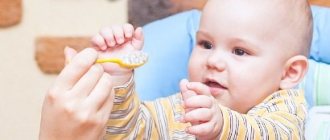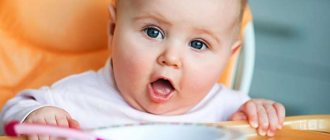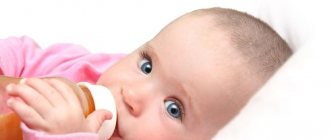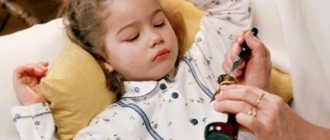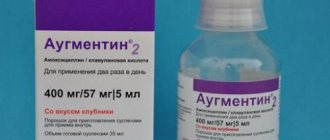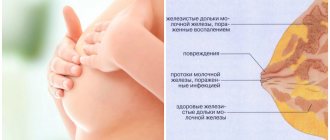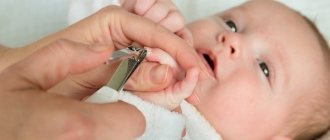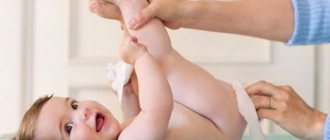Harm of antibiotics for children - what more harm or benefit do antibiotics bring to a child’s body? It is extremely difficult not only for children, but also for adults to treat many diseases without them. It is thanks to this remedy that humanity has managed to cope with bacterial infections, increase life expectancy and reduce the risk of complications of such dangerous ailments as tuberculosis, sore throat, pneumonia and others.
But not everything is so good, they also have a downside. Like other drugs, antibiotics can cause significant harm to the body, and especially to the baby’s body. In the last few years, pediatricians have “loved” treating children with antibiotics, prescribing them justifiably and not so, without thinking that this could be dangerous.
In this article we will talk about the danger antibiotic therapy poses to a child’s body.
[Hide]
Development of dysbiosis from antibiotics
Dysbacteriosis is the most common and most unpleasant consequence of taking antibiotics, as they destroy beneficial microorganisms and disrupt the microflora in the intestines. Unfortunately, antibiotics cannot determine which bacteria are good and which are harmful, so they kill everything at once. If you decipher the name antibiotic, it turns out that it is an anti-life drug, that is, aimed at destroying living microorganisms that are sensitive to it.
Taking antibiotics is always aimed at destroying and stopping the proliferation of bacterial organisms that provoke the development of the disease. Along with pathogenic microorganisms, representatives of the intestinal microflora living on its walls also fall under the action of antibiotics. As a result, the balance of beneficial bacteria is disrupted.
Antibiotics kill the weakest, but the strongest survive. Since the intestinal flora consists of various bacteria, including fungi, when the beneficial ones that control their numbers die, the fungal flora begins to actively develop, leading to dysbacteriosis and, as a result, problems with stool.
It should be noted that antibiotics are a fairly serious drug and only a doctor has the right to prescribe them. If the therapy is not long-term and the dose is correct, then dysbiosis will not develop in the child.
In most cases, loose stools in a baby during treatment with antibiotics with clavulanic acid are perceived by parents as dysbacteriosis. But in reality this is not the case. Acid has a similar effect on the intestines, which enhances its motility, leading to frequent and loose stools. At the same time, feces do not have a strong odor and impurities as with dysbacteriosis.
In addition, loose stools at the beginning of antibiotic therapy are not dysbacteriosis, since the disease does not develop quickly. It appears only a week after taking the drugs. Therefore, during long-term antibiotic therapy, in order to avoid the development of dysbiosis, biological products are prescribed that restore the intestinal microflora.
Dysbacteriosis
Perhaps the most unpleasant side effect of antibacterial therapy is dysbiosis, that is, intestinal upset.
You probably know that microorganisms live in our large intestines - bacteria, protists. By the way, protists, like bacteria, are single-celled living organisms. But bacteria do not have a nucleus in their cell, but protists do have a nucleus.
Microorganisms of the large intestine are not parasites, but so-called symbionts.
Symbiosis is a mutually beneficial cohabitation. This is the kind of mutually beneficial cohabitation we have with our intestinal microflora.
Microbes find a convenient place of residence and nutrition in our intestines. They help us partially digest fiber, since our body cannot do this; they synthesize B vitamins and vitamin K for us (important for normal blood clotting).
There are other processes in our intestines where the participation of intestinal microflora is mandatory.
A clear conclusion: we cannot do without microbes in the large intestine.
What happens to these microbes when we take antibiotics? And the same thing as with those pathogenic microorganisms against which we fight with antibiotics.
Based on the very name “antibiotic” (anti – “against” and bios – “life”), it is clear that the drug is directed against a living microorganism.
An antibiotic suppresses or kills all microorganisms that are sensitive to it. At the same time, he does not understand whether he is a friend or an enemy, whether he is useful or harmful to us.
The action of antibiotics of various groups is aimed at destroying (bactericidal effect) or suppressing the reproduction (bacteriostatic effect) of bacteria that cause the disease.
At the same time, not only pathogenic microbes are subject to harmful effects, but also representatives of normal microflora, for example, mucous membranes and intestines.
The result is that the balance of beneficial flora is disrupted. More sensitive microorganisms die, more resistant ones survive.
Fungi or more resistant flora, such as staphylococci, begin to predominate in the intestines. Colonies of these flora representatives grow and, thus, “thrush” (candidiasis) or “dysbacteriosis” problems with the intestines appear.
Important: antibiotics do not work on viruses!
You need to understand that antibiotics are quite strong and serious drugs, which should only be prescribed to both children and adults by doctors.
When used correctly under the supervision of a competent doctor, dysbacteriosis with short courses of antibiotics is not necessary.
Very often, parents perceive loose stools when taking antibiotics containing clavulanic acid (Amoxiclav or Flemoclav Salutab) as the onset of dysbacteriosis.
In fact, clavulanic acid itself has an irritating effect on the intestinal mucosa and increases its motility, which is manifested by frequent and looser stools.
Useful: Diagnosis and treatment of staphylococcal infection in a child
But at the same time, the stool does not have a strong odor (sour or putrid) and pathological impurities, as with the pathological growth of pathogenic bacteria.
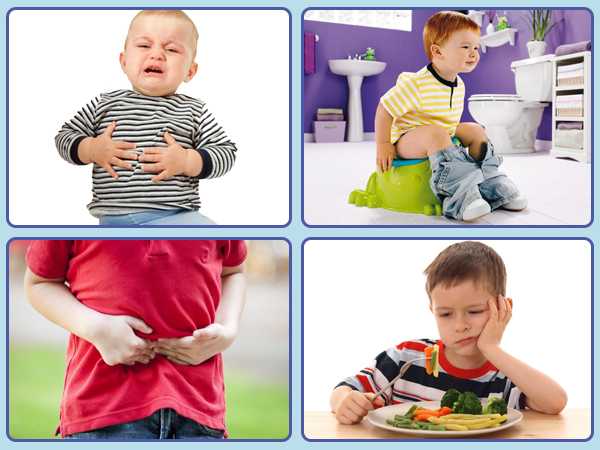
Moreover, liquefied stool at the beginning of a course of antibiotics cannot be considered dysbacteriosis. This process cannot develop instantly.
With long courses of antibiotics (more than 7-10 days), the development of dysbacteriosis is quite possible. Therefore, more and more often, in parallel with or after taking antibiotics, a course of biological products is prescribed to restore beneficial intestinal microflora.
Harm of antibiotics for children: Allergies
If antibiotics are irrationally or unjustifiably prescribed to a child, there is a risk of developing an allergic reaction and disruption of the enzymatic functioning of the gastrointestinal tract. But if antibiotic therapy is prescribed according to indications, then the possibility of an allergic reaction is minimized.
However, if the baby has an increased sensitivity to the components of the lekforma or the dosage has been violated, then an allergy may develop.
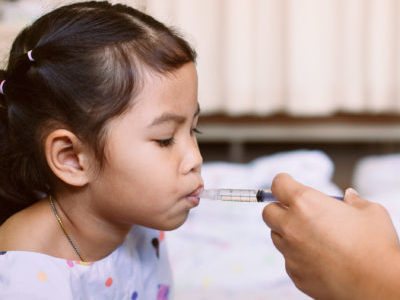
Impaired functioning of organs and systems
Antibiotics can have a negative effect not only on the intestines. They can also affect the functioning of other organs.
On the part of the liver - the liver is responsible for cleansing the body of waste and toxins. Most harmful substances enter the body through the gastrointestinal tract. For this reason, blood flowing from the intestines is first filtered by the liver and only then delivered to the heart. You have to pay for all the harmful particles in the liver with your cellular structures.
During antibiotic therapy, the load on the liver increases significantly. For this reason, the more often antibiotics are prescribed, and the longer their courses, the greater the chance that the organ will be seriously damaged. Over time, an inflammatory process may develop, leading to damage to the biliary system and inhibition of enzymatic function.
From the kidneys
The kidneys, just like the liver, act as a kind of filter. Almost all breakdown products of antibiotics are excreted from the body along with urine. Some of them are nephrotoxic and cause damage to the epithelial structures lining the inner surface of the kidneys. Such antibiotics are not often prescribed and only if pathogenic microorganisms are insensitive to a safe group of lekforms. In addition, when taking antibiotics, abdominal discomfort, nausea and bloating often occur.
From the stomach - the stomach is also subject to the negative effects of antibiotics. Some of them lead to increased production of gastric juice, increasing acidity. For this reason, tablets of this group should be taken after meals. This allows you to minimize the negative impact on the gastric mucosa. Not all lekforms are drunk after the child has eaten. Some of them need to be taken an hour or two before meals. Therefore, following these instructions is extremely important to avoid stomach problems after taking them.
On the part of the hearing organs - the ears can also suffer from antibiotics. There are antibiotics with varying degrees of ototoxicity, which is the destruction of the sensitive cellular structures of the auditory nerve and inner ear. The negative effects include tinnitus, dizziness and unsteady gait. Ototoxic drugs include aminoglycoside antibiotics. However, they are used extremely rarely to treat children.
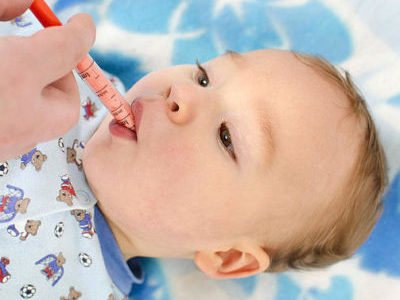
Rash on the body
There are three types of rash that may (but do not necessarily) appear during antibiotic use:
- An allergic rash, as a result of an allergy to the antibiotic itself. It manifests itself in several forms:
- Hives are red or white bumps that can affect any part of the body. They usually appear for a few hours, then disappear and reappear somewhere else. Typically, hives cause itching;
- pinpoint red or white pimples on any part of the body.
- flat red lacy rash.
- Rashes associated with illness. Often a rash is a symptom of viral diseases. It usually appears as pinpoint red or white bumps or flat, lacy rashes. Less commonly, its appearance resembles urticaria.
- An allergic rash as a reaction to other medications that you use in addition to antibiotic therapy.
Determining the etiology of the rash is very difficult even for a doctor. Because it is important to know whether your child is allergic to a specific antibiotic, it is recommended that the rash be seen by a specialist. In the future, this will help make decisions about which antibiotics are safe to use and which ones should be avoided.
What to do if you have a rash:
- stop taking the antibiotic until you see a doctor;
- Try giving your child Benadryl, an antihistamine for drug allergies that can temporarily relieve allergy rashes and itching. It is available without a prescription. The rash may return 4 to 6 hours after taking Benadryl. If the rash is not allergic, then the drug will not help, but it will not make it worse.
When to worry: The rash usually does not require immediate medical attention in the evening. Emergency medical attention is needed if your child has one or more of the following signs of a severe allergic reaction:
- wheezing;
- difficulty breathing (not just nasal congestion);
- difficulty swallowing due to throat swelling;
- profuse drooling with difficulty swallowing;
- any other symptoms that you think are signs of a serious allergic reaction;
- swelling of the joints.
Give antibiotics only as prescribed by a doctor and according to the instructions; if adverse reactions occur, stop taking them!
Minimizing negative consequences
To minimize the harm of antibiotics, when taking them you must adhere to the following instructions:
- Take antibiotics only when indicated - uncontrolled and unjustified use of antibiotics increases the risk of their negative impact on the child’s body. If a child is often prescribed antibiotic therapy out of necessity, then in case of serious, deadly bacterial ailments, when antibiotics really cannot be avoided, they will not help, since due to their uncontrolled use, resistance to them has developed. Parents should remember that if a specialist prescribed an antibiotic for a toddler and he quickly overcame the disease, they cannot be re-treated for a similar illness on their own. You should also always remember what medications the child took and whether there were any allergic reactions to them. This information will be useful when admitted to the hospital.
- Complete the course of medications to the end - you cannot stop treatment prematurely. You should know that the first few days of taking antibiotics only relieve symptoms, but do not eliminate the problem itself. For this reason, if the baby’s course is not complete, the disease will be muffled, but will continue to develop in a chronic form and in its subsequent outbreak, most antibiotics will not work. This will happen because the bacteria will develop immunity to the lekforms.
- Take on schedule - you cannot skip or take the drug at the wrong time, as the therapy will not have the proper effect. Double or triple use is prescribed for a reason. This scheme ensures a constant concentration of the antibiotic in the blood, which does not give pathogenic microflora a chance to survive and continue to multiply.
Take and not take together with other drugs
- Some pediatricians prescribe an antibiotic to a child along with antihistamines. This is unfounded and incorrect due to the fact that if an allergic reaction develops, it will not appear immediately, but only after a few days, which can significantly worsen its course. There are some medications that cannot be taken with antibiotics at the same time; several hours must pass between them. These drugs include ACC. It reduces the effect of the antibiotic to a minimum, as it absorbs it, thereby weakening its effect. But it is possible and necessary to use antibiotics with an antipyretic, since lekforms destroy bacteria, but do not reduce the temperature. During antibiotic therapy, high temperatures persist for some time, and in order for the child to feel better, it is necessary to additionally take an antipyretic.
In order for antibiotic therapy to cause as little harm as possible to the child’s body, you must strictly follow the doctor’s instructions and follow the recommendations described above.
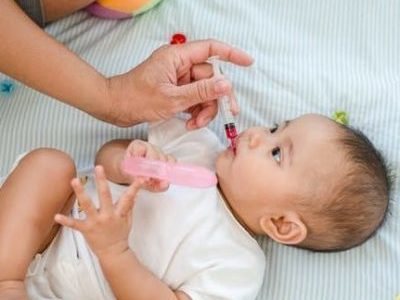
Is rehabilitation necessary after taking antibiotics?
Most parents do not consider it necessary to listen to the doctor’s recommendations regarding compliance with the rehabilitation period for the baby after taking antibiotics. You can’t do this, the body needs to be helped to recover.
After antibiotic therapy, the baby should limit contact with sick babies, exclude fatty foods, spend more time in the fresh air, strengthen the immune system and reduce physical activity. If these recommendations are not followed, there is a high probability that the baby will soon get sick again.
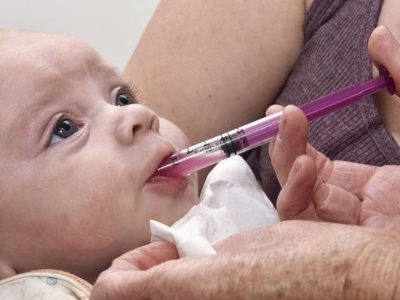
Reduced defenses
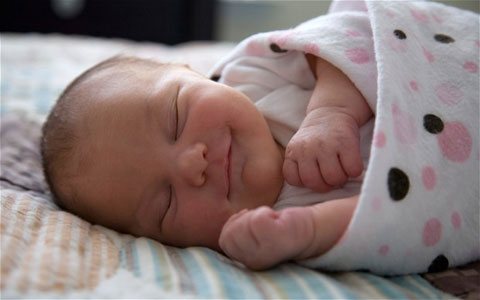
The intestines play an important role in the functioning of the immune system: it produces protective cells and absorbs useful substances. Disruption of its microflora (dysbacteriosis) or damage to the mucous membranes as a result of taking antibiotics leads to a general weakening of the child’s body. The situation can be aggravated by allergies, rare stools, or, conversely, frequent liquid feces.
How to restore normal functioning of a child’s immune system? Dr. Komarovsky recommends:
- protect your baby from new infections, including acute respiratory viral infections; to do this, for some time after illness you should avoid crowds and walk a lot in the fresh air
- monitor the air in the room where the baby is - the optimal temperature is 18-22 ° C, and humidity is 50-70%
- follow a vitamin-sparing diet and actively water the child so that the body is cleansed of toxins
- carry out gentle hardening
